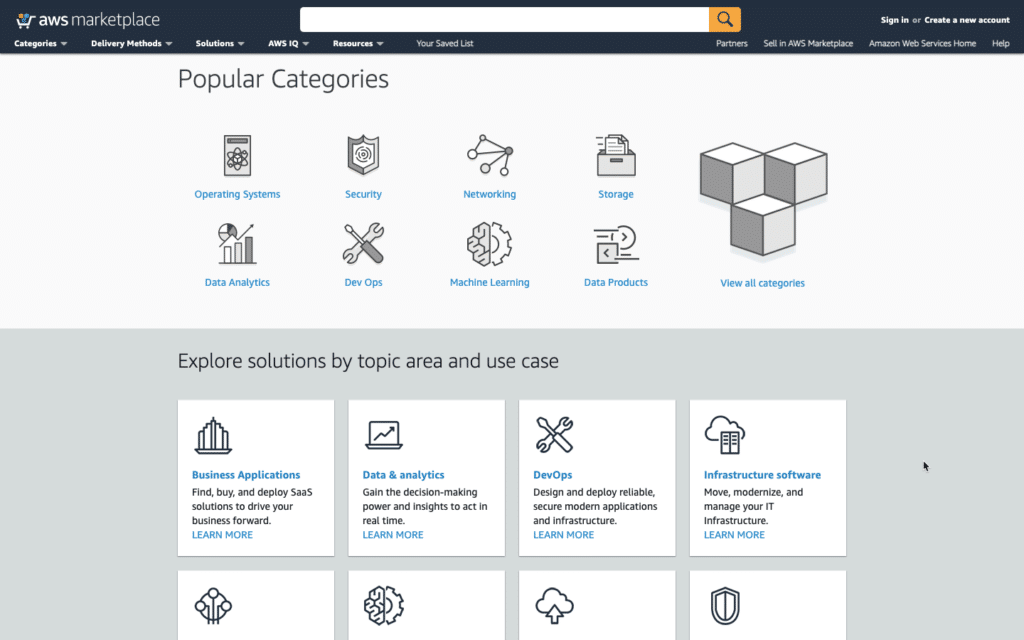With “Digital Transformation (DX)” a major topic for manufacturing, this series of articles provides an easy-to-understand look at strategies for how manufacturers should approach it. In the previous article, “Prerequisites and Three Strategies for Manufacturers to Consider Before Moving Forward with DX,” we discussed the big picture and prerequisites. In that article, we showed that there are three DX strategies that need to be considered: a platform strategy, a cloud application utilization strategy, and a 360-degree vision strategy. In this second article, we will discuss the “platform strategy.”
What is a Platform?
Before we get into the main topic, let’s do a little clarification on what a “platform” is. The term “platform” as used in this series means “the environment in which the software runs”. The platform that’s in the spotlight right now is “PaaS” (Platform as a Service). While explaining PaaS, I would like to introduce similar terms such as SaaS and IaaS together.
1 – Software-as-a-Service (SaaS)
It is the provision of software as a service. Examples of SaaS are free email, customer relationship management systems, and business software such as accounting systems. We’ll come back to SaaS in the next installment of “Cloud Application Strategies”.
2 – Infrastructure as a Service (IaaS)
The provision of infrastructure as a service, including virtual servers and security functions necessary for the operation of IT systems, such as Google Compute Engine, Amazon Elastic Compute Cloud, Microsoft Azure and Oracle Cloud Infrastructure are examples. In the past, to build an IT infrastructure, you had to prepare and set up the hardware from scratch, but now you can use it as an Internet service, so you can flexibly scale up or down the server configuration as needed. However, since only the infrastructure is provided, the users are responsible for developing the systems and services themselves.
3 – PaaS (Platform as a Service)
The provision of a database and program execution environment necessary for software operation as a service, including Google Apps Engine, Microsoft Azure, AWS, Oracle Cloud, Salesforce Platform, etc. In addition to what is provided in IaaS, the application development environment and execution environment are provided as a service. The application development is done by the users, but they are provided with what they need to develop the application.
The Environment Surrounding the Platform
In the B2C world, the market is becoming more and more oligopolized by the major U.S. platforms represented by GAFA (Google, Apple, Facebook, and Amazon.com). Originally, Google’s main business was as a search engine, Apple’s main business was PC and music devices, Facebook was a social networking site, and Amazon.com was an e-commerce site operator. However, they have leveraged their respective market positions to build platform environments and offer a variety of product services. Free email, map search, music distribution, video distribution, financial payments, and many other services that GAFA now offers are so diverse that they have become an integral part of people’s lives.
The same thing is going on in the B2B world as well. One example of this is the Salesforce platform. Salesforce, which provides Sales Force Automation (SFA) and Customer Relationship Management (CRM) systems, operates a marketplace called the AppExchange (similar in concept to Apple’s App Store), which offers a variety of business applications. The AppExchange offers a wide range of tools, from business applications such as financial accounting, human resource management, and production management, to report generation and esignature document management. Other B2C platforms, such as Amazon.com’s AWS, are also actively expanding into the B2B service area.
Screen image of the AWS marketplace. Source: Amazon
From a platform strategy perspective, the implications for platform providers (platformers) and recipients (users) are very different. The main goal of a platform provider is to retain customers. By offering a variety of products and services on the same platform, the goal is to provide a one-stop-shop model. So, what are the benefits from the user’s perspective? This is a bit of a long-winded introduction, but here’s what I’d like to talk about.
The Value of the Platform as a DX Strategy
We will now examine the “benefits of platforms” as a DX strategy for manufacturing. We will assume that the “ecosystem” is built on a combination of applications on the same platform. In that case, I believe there are three advantages:
1 – No need for system integration (SI)
A variety of systems are required for production activities. These include CAD and PLM (Product Lifecycle Management) systems for design, MES (Manufacturing Execution System) for site management, production schedulers, and production management systems. When these systems are implemented separately, an interface must be built to link data between the systems. On the other hand, it is common for applications deployed on the same platform to have a standard specification for linking data from one system to another. This is because each application is developed based on the design specifications defined by the platform. Therefore, there is no need to develop new applications just for data integration.
2 – Single database
Transaction data from each application can be stored in a centralized database on the same platform. The advantage of centralized database management is that it enables data analysis based on multiple data across systems. For example, KPI (Key Performance Indicator) analysis that links the data in the sales management system with the data in the production management system can be easily performed.
3 – Easy to Ensure Security and Remote Access
With the growing importance of data, security measures to protect data are essential. Customer data, sales data, bills of material, manufacturing costs, and many other types of data are held by manufacturing companies. Advanced security features are becoming increasingly important for the storage of this important data. However, it is becoming increasingly difficult for individual companies to continue to make large investments in advanced security measures to protect data. So, it’s also an advantage to keep your data safe by outsourcing it to a platform that can continue to take large-scale security measures economically.
In 2020, 5G services were launched. This ultra-high-speed communication, which is said to be 20 times faster than the conventional 4G, is expected to create significant changes in business system operations. With the increase in remote connectivity opportunities due to the corona crisis, the need for stress-free systems that can be connected to each other at any time and from anywhere is a major theme that needs to be considered in terms of how to ensure security.
In the future, there is a high possibility that competition among platforms will become more intense in the B2B domain as well. At the same time, there may come a time when not only business management applications such as ERP (Enterprise Resources Planning) systems, but also field systems that control production facilities will be migrated to platforms.
In the next installment of “Strategies for Leveraging Cloud Applications,” we will compare on-premise and cloud-based business applications and look at the future of cloud applications.
Meet the Author
Takumi Kurita
Director of Rootstock Japan K.K.
https://www.linkedin.com/in/takumi-kurita-8060a331/








